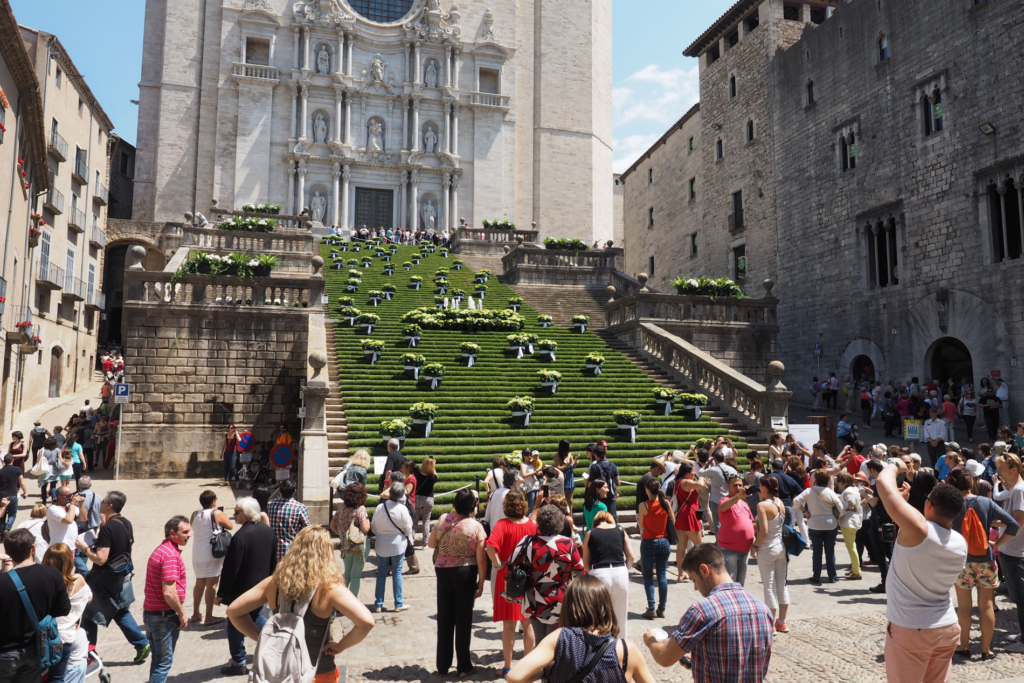Girona is a large and rich province, located in the northeast of Catalonia. It runs from the famous Costa Brava to the Pyrenees, crossing the inland.
But Girona, the capital itself, crossed by four rivers, deserves to be visited calmly and with attention.
– A bit of its history. Its history dates back to the settlements of the Iberians, whose archaeological sites are preserved in San Pedro de Galligans or later Roman villages in Empuries, but whose exhibition center is the impressive Archeology Museum of Girona.
– The Jewish quarter. Since immemorial time, Girona was the cradle of great Jewish philosophers, and had its time of maximum splendor of the Jewish community of Girona with the Kabbalistic school. Within the crossroads of medieval alleys, the Jewish quarter, El Call, stands out where a small community lived until the end of the 15th century. The Bonastruc Ça Porta Center stands out in it, the possible former synagogue converted today into a center of studies and Museum of Jewish History. Currently, the Jewish quarter of Gerona is one of the best preserved in Europe and is one of the tourist attractions of Girona.
– Old town. The old town of Gerona, the heart of the original Roman city of Gerunda, contains all the most important artistic heritage of the city and is surrounded by immense canvases of the wall that can be traversed by the Archaeological Walk and the Outside Wall Walk, with a beautiful viewpoint over the city.
The Cathedral of Santa María, built between the 11th and 18th centuries, presents three main, successive architectural styles: Romanesque, Gothic and Baroque. Its cloister is Romanesque, with interesting historical capitals. Its wide Gothic nave stands out for being the second widest in the world, after the basilica of Saint Peter in the Vatican.
– Girona today. In recent years Girona has become a cosmopolitan city and open to the four winds because of the development through which it has passed. Its airport, high-speed trains and a wide network of highways make Girona a city with easy access and ready to welcome its visitors, not only for its history, but also for the wide range of attractions it offers. Gastronomy and wines of course, but also for the number of events, be it fairs, congresses or festivals.
Some examples are:
Girona, Temps de Flors: Floral exhibition. It is celebrated the third week of May.
Autumn Theater Festival of Catalonia. It is celebrated annually in the cities of Girona and Salt.
Girona Film Festival: the last week of September is celebrated.
Nits de Clàssica: classical music festival, held in summer in the city of Girona.
Girona Jazz Festival: festival that takes place between the end of September and the beginning of October.
Gastronomic Forum: It is celebrated biannually
Based in Barcelona, Iberinbound, incoming travel agency, iberinbound@iberinbound.comwe are a receptive agency that serves those who expect the best and who appreciate the additional details that make a great product an even better one. As DMC, we really act as a local extension of your company.
A characteristic of Gerona are the houses hanging on the Oñar river. All river facades are painted following the color palette conferred by Enric Ansesa, Jaume Faixó and the architects J. Fuses and J. Viader.


